Briddlesford Woods
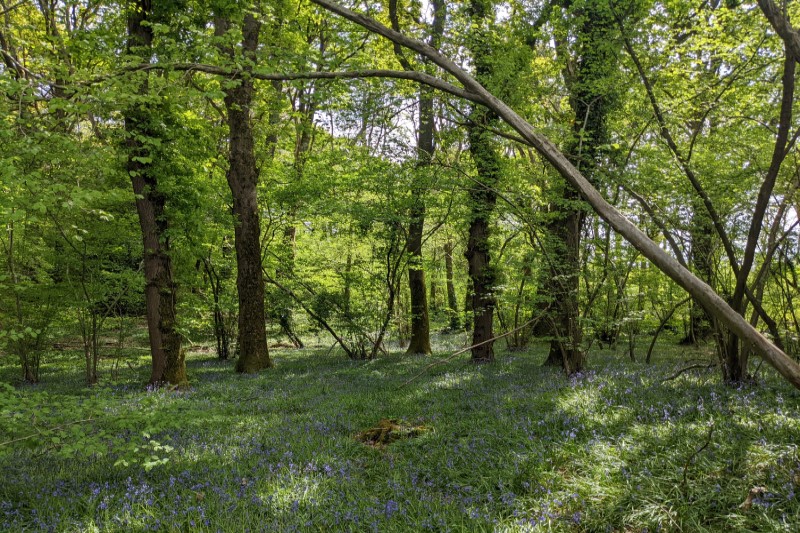
The magnificent Briddlesford Woods is the largest remaining ancient semi-natural woodland on the Isle of Wight with some very special residents.
Briddlesford Woods is one of the few places in the UK where endangered dormice and red squirrels can both be found. Two species of rare bat, barbastelles and Bechstein’s, also breed there. Consequently, the woodlands have been designated as both a Site of Special Scientific Interest and a Special Area for Conservation. This gives it the highest legal protection. For 30 years we’ve been preserving and enhancing this wildlife haven thanks to donations from our supporters and a number of grants.
The site is also of interest for its insect and plant life. One of the most important features of the woodland plant life is the abundance of narrow-leaved lungwort. This species is restricted in Britain to ancient woodlands on the shores and tributaries of the Solent.
The presence of these rare animals and plants in our woods is a combination that’s unique within the UK. It therefore needs constant care and protection.
Latest news
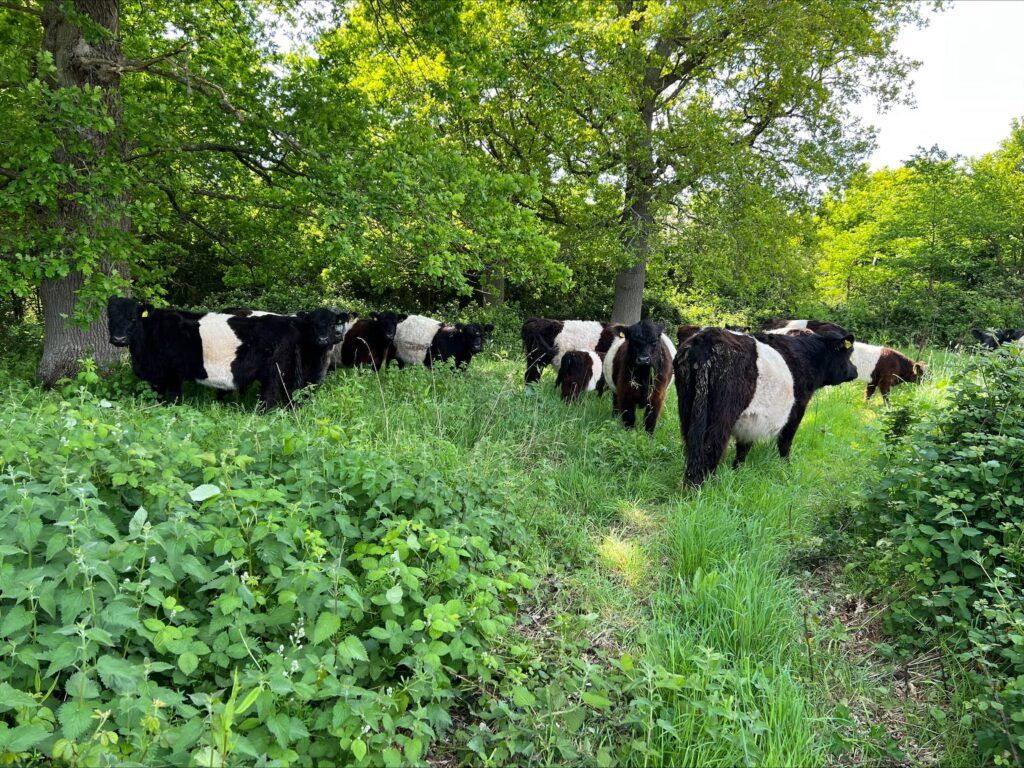
We’re now in the third year of our 10-year plan to create 27 hectares of wood pasture across the reserve. In May, 28 belted Galloways (a traditional Scottish breed of cattle often used for conservation grazing) will begin grazing there. We’ve allowed the site to be ungrazed for the last two years to allow the natural regeneration of trees and shrubs and for bramble and thorny bushes to grow. We also planted nearly 2000 trees and shrubs (including oak, hazel, spindle and disease resistant elm) in wooden tree cages to protect them from the cows when they arrive.
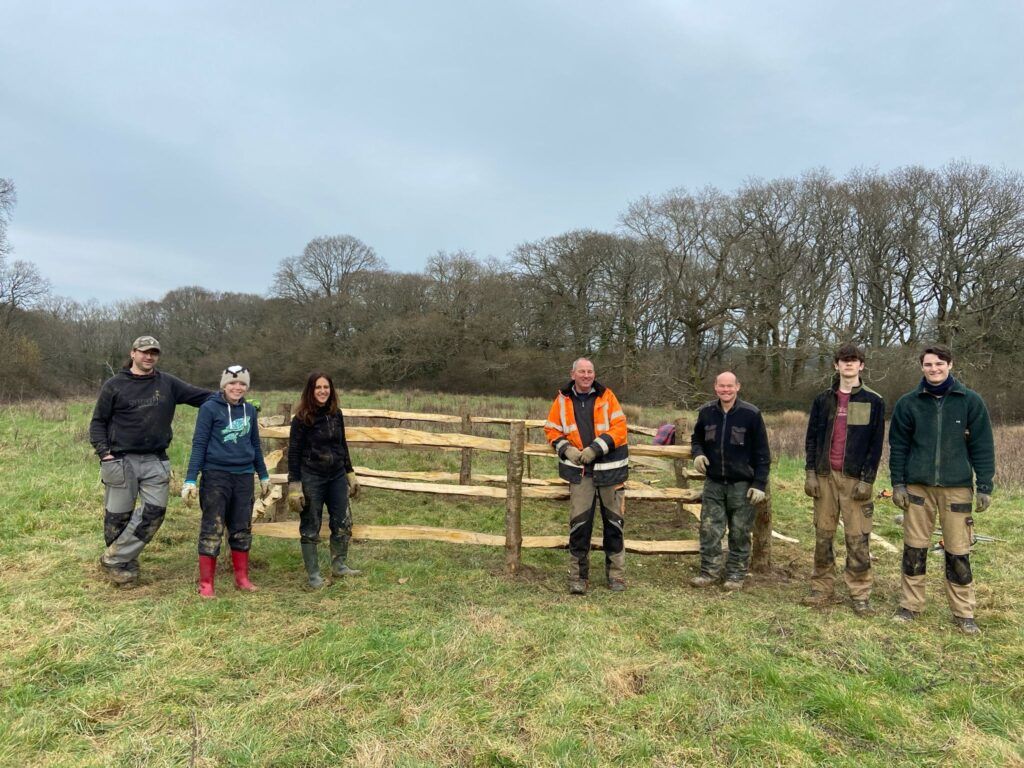
The woods are looking and sounding beautiful at the moment, with carpets of bluebells and birds singing. Earlier this year, we held our annual volunteer weekend at Briddlesford. A group of 30 volunteers and staff spent two days in the woods coppicing hazel, building a tree cage planting and repairing stiles.
Woodland management
We’ve established long-rotation (15-20 years) hazel coppice to ensure a steady supply of hazelnuts for the red squirrels and dormice to eat. We also maintain a network of rides (essentially paths through the woodland) and glades to allow light to reach the woodland floor benefitting wild flowers, butterflies and other invertebrates.
In 2005, we planted over 5,000 native trees grown from seed collected in Briddlesford and we’ve been actively encouraging natural regeneration of native trees in the surrounding copses into grassland areas.
There are areas of non-intervention within the woodland where we’ve allowed a high forest structure to develop. This habitat is of considerable conservation value and adds another dimension to this diverse woodland. We retain plenty of dead and decaying wood wherever possible to encourage insects and fungi.
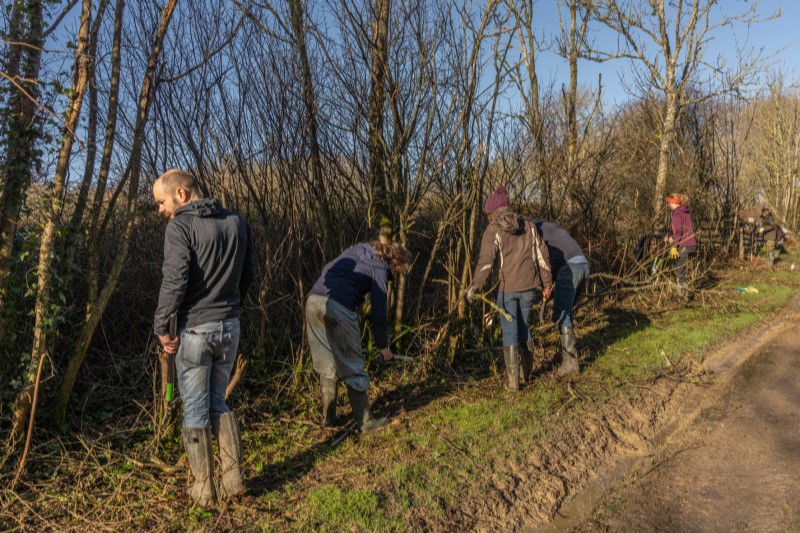
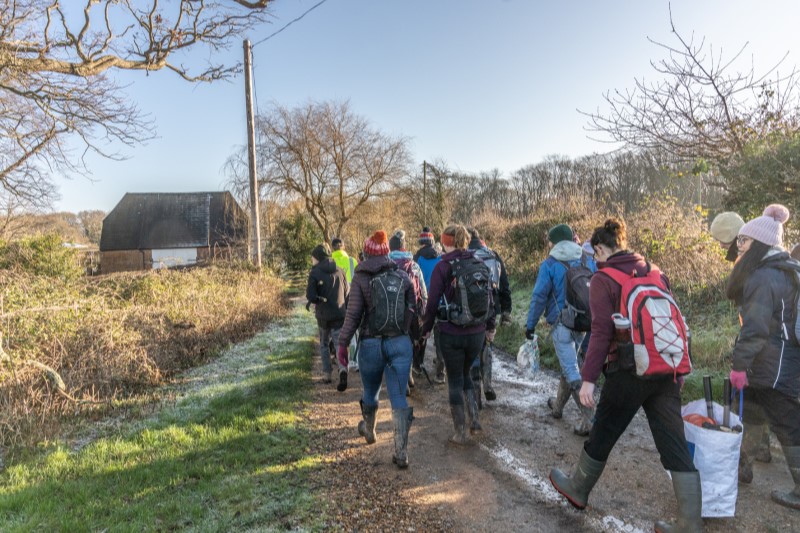
Farmland management
Interspersed between the copses, we manage 30 hectares of wildflower rich grassland and we have reverted 6 hectares of arable back to grassland. These areas are grazed by a neighbouring farmer’s cattle. Within this grassland we have also sown just over a hectare of nectar rich plants, carefully selected to provide food for insects.
We have dug 14 ponds to add value to the grassland areas. These create areas for bats to feed, for dragonflies and amphibians to breed and for birds and mammals to drink or bathe. Cattle use the ponds to drink from and as they do so they ‘puddle’ the edges so that the pond retains water for longer.
Wildlife monitoring
A host of experts regularly help us monitor the array of special species that live in our woods. This helps us assess the impact of our land management and make further improvements. It also helps us to keep the land protected for years to come.
Visit us
You can visit this special place year round. Briddlesford Parkland – 10 hectares of peaceful wood pasture, and Hurst Copse – five hectares of beautiful ancient woodland, near Wootton Bridge on the Isle of Wight, are open for you to explore. Please email laura.bower@ptes.org if you would like more details to help you plan and make the most of a visit.
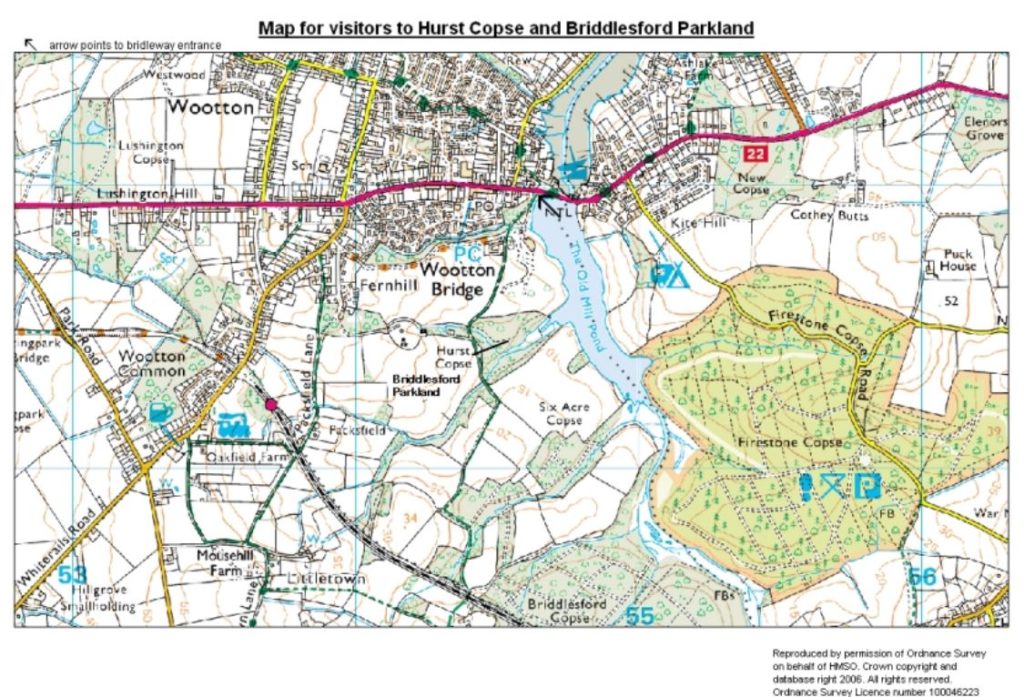
View map of Briddlesford Woods for visitors.
Events
There are occasionally opportunities to join one of our guided walks around Briddlesford or longer training courses. Details of all our public events can be found in our here.
Why not combine a visit to Briddlesford Woods with a trip on the Isle of Wight Steam Railway? From the train you can see the surrounding beautiful countryside from a different angle. The railway line actually passes through Briddlesford Copse, which is also owned and looked after by us.
Help us
If you live locally or visit the Isle of Wight regularly and you would like to volunteer your time at our reserve please contact laura.bower@ptes.org. There are opportunities to take part in dormouse monitoring and practical management such as coppicing and tree planting.
Thank you for helping us keep Briddlesford a haven for wildlife. If you’d like to support this work, please donate or set up a direct debit here today.
